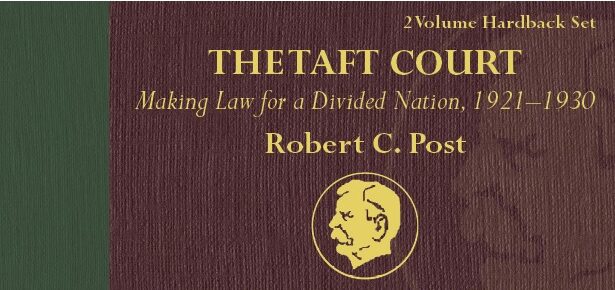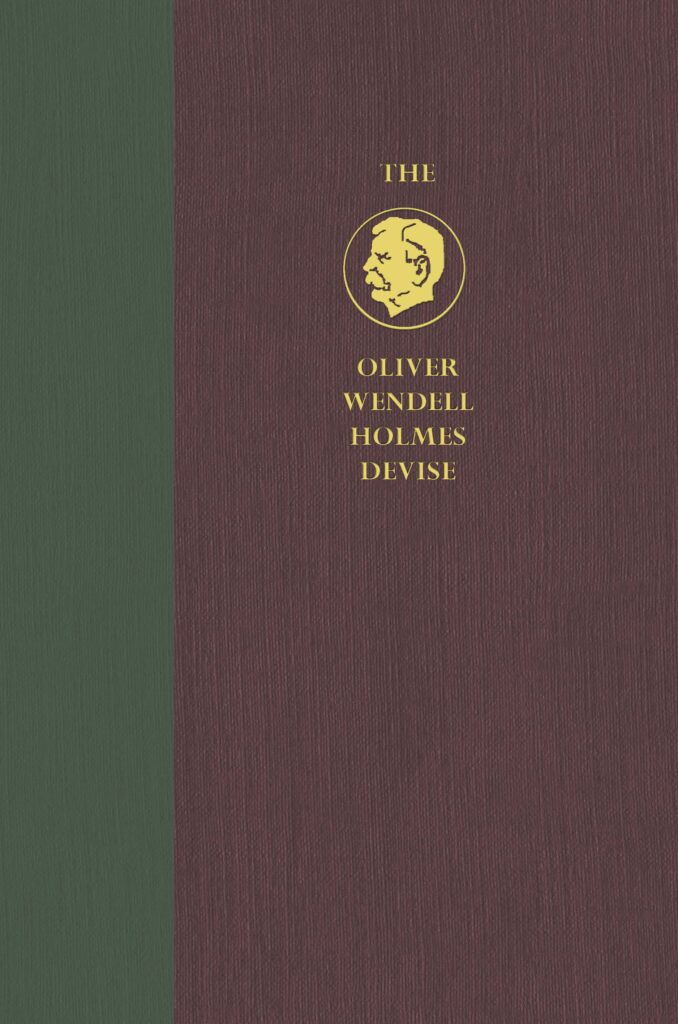
This book constitutes Volume X in the Oliver Wendell Holmes Devise History of the Supreme Court of the United States. It is an authoritative account of the period 1921-1930, when William Howard Taft was Chief Justice.
World War I profoundly expanded the administrative capacities of the American state. Riding the wave of an intense backlash, Warren Harding was elected president in 1920 to return the country to “normalcy.” Appointing four justices in less than two years, Harding deliberately pushed the Court to right, seeking to cabin the regulatory impulses liberated by the war. The excesses of the Taft Court ultimately lead to the titanic constitutional struggles of the New Deal.
The 1920s was a confused period in American history. The nation sought to consolidate administrative innovations produced during the war (as for example in the Transportation Act of 1920, which effectively made the Interstate Commerce Commission the governor of the nation’s intrastate and interstate railway systems), and at the same time to circumscribe state efforts, inspired by wartime precedents, to assert tentative control over the market and society. The conservative majority on the Court vigorously resisted these efforts. It was during this period that Lochnerism was revived as a major constitutional jurisprudence.
There were at the time two distinct conservative constitutional narratives. Justices like James C. McReynolds sought to preserve custom and tradition as a vital source of constitutional authority. They regarded innovations inconsistent with custom and tradition, like the Federal Trade Commission, as constitutionally suspect. Justices like Taft, by contrast, did not oppose progressive administrative experiments, but they sought actively to protect constitutional property rights because they deemed these rights as necessary to preserve civilization and sustain prosperity.
Opposing these conservative constitutional narratives was profound and influential view of Oliver Wendell Holmes, who believed that the Constitution was a form of positive law that had to be strictly interpreted according to its precise terms. Opposed also to both Holmesian positivism and all forms of conservative constitutional jurisprudence was the strikingly original view of Louis Dembitz Brandeis, who viewed the Constitution as a charter of democracy that required the Court to defer to popular enactments except those that threatened the operation of democracy itself.
The most bitter political controversy of the time—prohibition—split the two strands of conservative thought. Justices like Taft, Willis Van Devanter, and Edward Terry Sanford, embraced Holmesian positivism to sustain unpopular federal efforts to enforce the sumptuary regulations of prohibition, while Justices like McReynolds, George Sutherland, and Pierce Butler opposed prohibition in the name of a traditional conservative allegiance to custom and tradition. The first group of conservatives allied with the Court’s liberals to produce a very dry Court. The strict and striking positivism of the Court’s prohibition jurisprudence helped pave the way for the full-blown emergence of the administrative state in the 1930s.
Contrary to the positivism of Holmes, the Court during the 1920s imagined itself as speaking for the values of the entire American people, as would a common law court. In the context of labor unrest, which was quite pronounced at the outset of the decade, this claim to judicial authority was so obviously hegemonic that it produced the backlash of the Norris-LaGuardia Act of 1932. The Court’s efforts to deal with what was then called “industrial warfare” should be contrasted with its support for race discrimination and southern apartheid, which was explicit and uncontroversial. Race did not become a central concern of the Equal Protection Clause until the Great Migration produced Black voting blocks in northern and border states capable of influencing the Senate to reject Hoover’s nomination of John J. Parker to replace Sanford in 1930.
The 1920s marked the transformation of the Supreme Court from a final appellate tribunal into something closer to the manager of the system of federal law. The passage of the Judges’ Bill of 1925 gave the Court, for the first time in its history, virtual control over the contents of its docket. The change in the nature of Court altered the nature of the Court’s authority. The Court evolved from an institution that settled disputes into an institution that deliberately made national policy. This change deeply affected internal norms of judicial behavior. It encouraged the proliferation of dissenting opinions, and it led the Court to turn to academic law review literature in search of epistemological authority.
The volume contains full sketches of essential American judicial figures like Holmes, Brandeis, Harlan Stone, Sutherland, Devanter, McReynolds, and others. The volume draws heavily on unpublished archival sources, including previously unknown docket books that describe the Court’s voting in conference.

Latest Comments
Have your say!